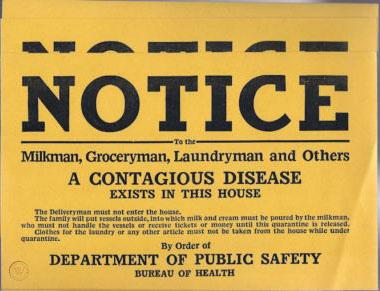A report from the U.S. Centers for Disease Control and Prevention shows an unexpected consequence of efforts to stop the spread of the Covid-19 virus: little or no spread of the flu. The report reads, in part:
In the United States, influenza virus circulation declined sharply within 2 weeks of the COVID-19 emergency declaration and widespread implementation of community mitigation measures, including school closures, social distancing, and mask wearing, although the exact timing varied by location (2). The decline in influenza virus circulation observed in the United States also occurred in other Northern Hemisphere countries (3,4) and the tropics (5,6), and the Southern Hemisphere temperate climates have had virtually no influenza circulation. Although causality cannot be inferred from these ecological comparisons, the consistent trends over time and place are compelling and biologically plausible. Like SARS-CoV-2, influenza viruses are spread primarily by droplet transmission; the lower transmissibility of seasonal influenza virus (R0 = 1.28) compared with that of SARS-CoV-2 (R0 = 2–3.5) (7) likely contributed to a more substantial interruption in influenza transmission. These findings suggest that certain community mitigation measures might be useful adjuncts to influenza vaccination during influenza seasons, particularly for populations at highest risk for developing severe disease or complications.
Initially, declines in influenza virus activity were attributed to decreased testing, because persons with respiratory symptoms were often preferentially referred for SARS-CoV-2 assessment and testing. However, renewed efforts by public health officials and clinicians to test samples for influenza resulted in adequate numbers tested and detection of little to no influenza virus. Further, some countries, such as Australia, had less stringent criteria for testing respiratory specimens than in previous seasons and tested markedly more specimens for influenza but still detected few with positive results during months when Southern Hemisphere influenza epidemics typically peak. A new Food and Drug Administration–approved multiplex diagnostic assay for detection of both SARS-CoV-2 and influenza viruses could improve future surveillance efforts (https://www.cdc.gov/coronavirus/2019-ncov/lab/multiplex.html).
It is difficult to separate the effect that individual community mitigation measures might have had on influenza transmission this season. Although school-aged children can drive the spread of influenza, the effectiveness of school closures alone is not clear because adults have other exposures (8). There is evidence to support the use of face masks by infected persons to reduce transmission of viral respiratory illnesses to others and growing evidence to support their use (in the health care setting, in households, and in the community) to protect the healthy wearer from acquiring infection. More data are needed to assess effectiveness of different types of masks in different settings (9). Data from the current pandemic might help answer critical questions about the effect of community mitigation measures on transmission of influenza or other respiratory diseases. In addition, assessing acceptability of effective measures would be critical, because acceptability is likely to be inversely correlated with the stringency of the measure.

